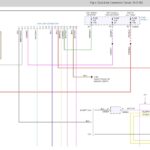For Mercedes-Benz owners, maintaining peak engine performance is paramount. Like many modern vehicles, Mercedes models can sometimes experience issues related to the oil cooler system. One component that may require attention is the oil cooler solenoid, also known as a magnet. This guide provides a step-by-step walkthrough for replacing the oil cooler solenoid, based on a real-world experience with a 2008 Mercedes-Benz ML350. While this procedure was performed on an ML350, the general principles may apply to other Mercedes models with similar engine configurations.
Preliminary Steps and Essential Tools
Before diving into the replacement, preparation is key. Accessing the oil cooler solenoid can be challenging due to tight clearances around the engine components. Gathering the right tools and understanding the initial steps will save you time and frustration.
Here are some crucial preliminaries and tool notes:
- Torx Bolts: For the oil cooler assembly and power steering reservoir, you’ll primarily encounter T30 Torx bolts. These generally require low torque for removal.
- Magnet/Solenoid Bolts: The bolts securing the magnet/solenoid itself are E-8 (external Torx). Again, these are typically low torque.
- Access is Key: Gaining access to the rear screws of the oil cooler is often the trickiest part. Crucially, if you cannot confidently figure out how to access these screws, it’s advisable not to proceed. Consider using a 1/4″ flexible extension with a T30 Torx driver. A short T30 driver (around 1.5 inches long) with a narrow diameter is also highly recommended, especially if you need to loosen the power steering fluid reservoir for more room.
- Replacement Parts: Ensure you have the correct replacement solenoid/magnet. For this ML350, the original part was A2720510077, superseded by the updated part A2720510177. This part typically includes a new o-ring gasket.
- Gaskets (Optional but Recommended): While not always necessary, having replacement gaskets on hand can be a good preventative measure.
- A2721840080: Gasket for the oil filter housing to the engine (often not needed for solenoid replacement alone).
- A2721840280: Gasket for the oil cooler to the oil filter housing. This is the gasket you’ll likely need when separating the cooler from the housing to access the solenoid.
Step-by-Step Replacement Procedure
With preparations complete, follow these steps to replace your Mercedes oil cooler solenoid:
-
Coolant Drainage (Partial): To minimize the risk of coolant and oil mixing when separating the cooler, drain a few quarts of coolant. This reduces pressure and potential spillage.
-
Power Steering Reservoir Adjustment: In many cases, loosening and slightly moving the power steering reservoir provides the necessary clearance to access the oil cooler bolts. Locate the three T30 bolts securing the reservoir and carefully loosen them. This should allow you to maneuver the reservoir slightly for better tool access.
-
Oil Cooler Bolt Removal: Identify and loosen the five T30 bolts holding the oil cooler to the oil filter housing. Using your T30 driver (potentially with a universal joint and extension), carefully access and loosen all bolts. Ensure you can reach all of them before proceeding.
-
Cooler Separation and Solenoid Access: Once the bolts are removed, the oil cooler should split away from the filter housing at the expected joint. With the cooler separated, you now have clear access to the oil cooler solenoid/magnet.
-
Connector Disconnection: The solenoid has a standard Mercedes-Benz electrical connector with a locking mechanism. Lift the lock tab (usually around 1/8 inch) and carefully disconnect the electrical connector. If the connector is stiff, gentle persuasion may be needed.
-
Solenoid Removal: Remove the E-8 bolts securing the solenoid to the oil cooler housing. Once unbolted, carefully remove the old solenoid.
-
Gasket Replacement and Cleaning: Remove the old oil filter-to-cooler gasket and replace it with a new gasket (A2721840280). Thoroughly clean the gasket sealing surfaces on both the cooler and the filter housing to ensure a proper seal.
-
New Solenoid Installation: Install the new solenoid/magnet (A2720510177) and tighten the E-8 bolts to the appropriate low torque specification.
-
Cooler Reassembly: Reinstall the oil cooler onto the filter housing. A helpful tip is to start by loosely installing the top or front screw to hang the cooler in place, making it easier to align and install the remaining bolts. Install the bottom and middle screws next. Be cautious not to drop any bolts in hard-to-reach areas.
-
Final Reassembly: Reattach the power steering reservoir (if loosened) and tighten the T30 bolts. Reconnect the electrical connector to the solenoid, ensuring the lock tab is engaged.
-
Coolant Refill and Checks: Refill the coolant to the correct level. Start the engine and check for any leaks around the oil cooler and filter housing. Monitor engine temperature and oil pressure to ensure proper operation.
Conclusion: DIY Solenoid Replacement
Replacing the Mercedes-Benz oil cooler solenoid is a manageable DIY task for those with some mechanical experience. While access can be challenging, with the right tools and a methodical approach, it’s achievable. This job, potentially a two-hour repair in a professional shop, might take a bit longer for a DIYer due to tooling and access considerations, but the cost savings on labor and dealer part prices can be significant. By following these steps, you can address potential oil cooler solenoid issues and maintain the performance of your Mercedes-Benz. Remember to always prioritize safety and consult your vehicle’s repair manual for specific torque specifications and procedures relevant to your exact model.

